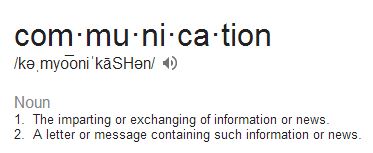Is Education Preparing For A "C" Change?

C ommunication. Its importance in education has certainly NOT been minimized. After all, how often are you told (or tell others) that communication needs to improve? Communication is so important that it found its way on the list of important 21st century skills (with creativity, critical thinking, collaboration, and in some schools - character). I even wrote a book about improving communication . However, I wonder if communication alone misses the mark. Maybe the reason communication is consistently among the most criticized "Cs" is that the need is not really better communication. Maybe, the need is related to communication, and because the actual need isn't on the list of "Cs" we chose the closest "relative" on the list. Communication is still important and needs to remain a focus of schools, but maybe what we have been seeking is a cousin of communication. Maybe what we really desire is a better connection.
